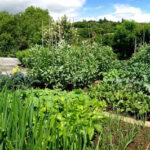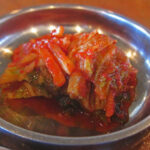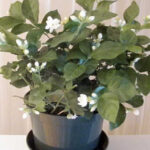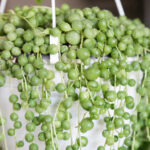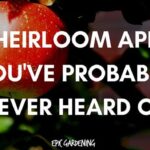Mulch is the bread and butter of a low-maintenance garden. Without it, we’d be so busy watering and weeding that we wouldn’t have time to appreciate our own handiwork! So whether you’re a first-time mulcher or just looking to change things up, we’ll help you navigate through all types of mulch and what they can do for your garden.
Regardless of the medium, every type of mulch all has the same goal: keep the moisture in and the weeds out. Because it’s a physical barrier between the soil and sun, water evaporation is decreased and weeds have a tough time pushing through. There are also extra benefits of mulch, such as fertilizing, insulating the soil, or just looking pretty.
Before diving into all the types of mulch, consider what your garden bed could use. Are you looking for something efficient yet ornamental for your front yard? Something to soak up excess moisture at the bottom of a hill? A helping hand in the vegetable patch? Whatever mulch your garden needs, we’ll help you find it with this quick review of all types of mulch.
Organic Mulch

Organic mulches are your part-time fertilizers. They’ll decompose into the soil over time, replenishing it with nutrients and boosting plant growth. Often, the spent mulch can just be tilled into the soil. However, because they decompose, organic mulches need to be replenished often (some even monthly!). These types of mulches are typically the most environmentally friendly, especially since they’re often byproducts. So, here are our top organic mulches that stop weed growth and boost soil quality.
Straw Mulch
Straw is the dried-up stalks of grain plants such as wheat, oat, or rice. Hay can make up a good amount of the straw, but it also tends to carry lots of unwanted, sproutable seeds. Luckily, hay-free and weed-free garden straw is available in both small bags and large bags from the Epic Gardening shop. Also, you may be able to get used bales for free from businesses that created displays in the fall, but they won’t be seed-free.
Straw mulch is one of the best choices out there, especially for vegetable gardens and raised garden beds. It decomposes easily and is lightweight. However, they decompose quickly, so you’ll need to add another layer of mulch every 1-2 months.
Did you know you can actually grow some plants completely in straw? Many gardeners will grow potatoes in mounds of it or plant tomatoes and peppers directly in a decomposing straw bale.
Wood Chips
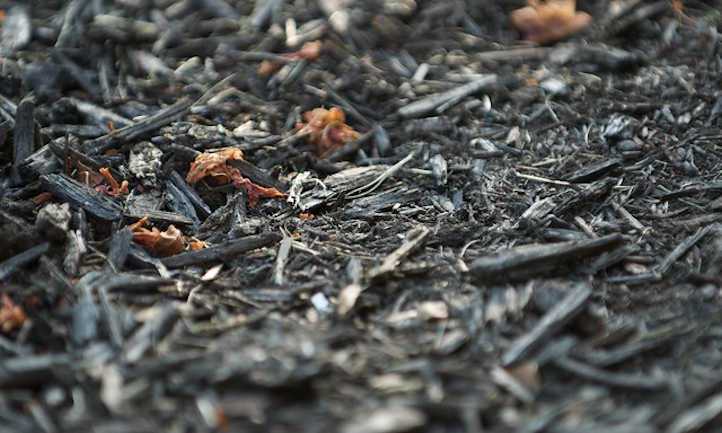
We’re talking regular or dyed wood chips here. These types of mulch are made of the trunks and branches of trees (unsold Christmas trees often meet this fate). When sold by a retailer, wood chips may be dyed or treated for weed spread prevention and color longevity. You can even find some with reduced flammability. This mulch usually only has carbon or iron oxide-based dyes, so they should be safe for your garden beds (always check the labels first!).
Wood chips are larger in size than most other tree-based mulches. Because of this, they’re usually best-suited for landscaping and other places that won’t be disturbed much. The downside to their size is that the pieces can easily be washed away. You may find yourself regularly kicking dyed chips back into the landscape while strolling down the sidewalk. You should definitely avoid mulching with hardwood chips on hills (they won’t stay put long!).
Arborist’s Wood Chips
This type of mulch is the wild side of hardwood chips. Arborist’s wood chips are made from the byproducts of tree trimming and removal. They often include a lot of leafy material and other parts from trees, shrubs, and other woody plants. This diversity of texture is actually beneficial since it keeps the layer of mulch from compacting down. And, if you’re doing Back To Eden gardening, you will find this to be your best choice!
Arborist’s mulch is usually free if you know who to ask. Try calling a local arborist or landscaping company (you can even flag down a truck). They usually have to pay to dump their tree waste, so offer up your garden beds as a free dumping site! Websites like ChipDrop also offer up arborist wood chips for low to no cost.
Even though it isn’t processed and treated, this type of mulch is generally safe for the garden. Insects and bacteria are usually killed off from the chopping process and how dry the mulch gets. You may want to watch out for trees that were treated with pesticides.
Some types of arborist chips are better than others. Walnut tree products are generally avoided because they contain allelopathic chemicals that are toxic to other plants. Similarly, tree of heaven and eucalyptus are often also avoided. Make sure you specifically request chips free of these tree species.
This organic mulch is a slow decomposer, so it’s great for any landscape. Also, in my opinion, it’s a bit more sophisticated-looking than straw. It absorbs moisture and holds it, keeping soil consistently damp. Overall, it’s an amazing choice for many people.
Shredded Bark Mulch
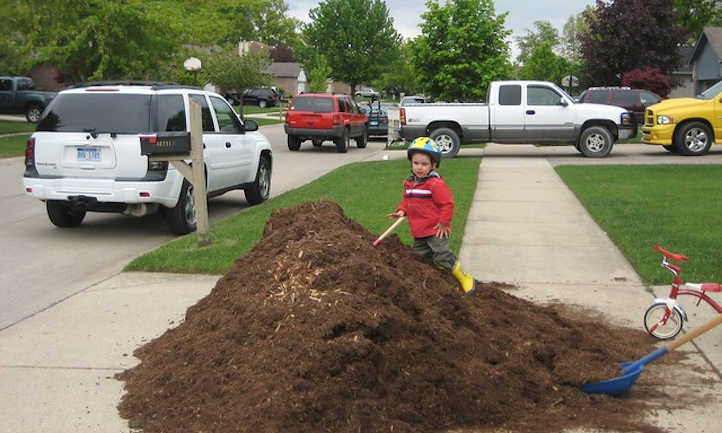
This is the right mulch if you like the wood chip look but not the large pieces. Shredded bark mulch has much smaller chips that are less likely to wash away in the rain. They’re made from a variety of trees but still look fairly uniform. This is also one of the cheapest mulches out there.
Shredded bark mulch is a slow decomposer, making it a long-lasting solution for your landscape. However, it may absorb nitrogen from the soil as it decomposes. If you’re planning to use it around nitrogen-loving plants, you may want to supplement the shredded bark with a bit with fertilizer.
Some shredded barks, such as cedar mulch, can also have a bonus skill: aromatic cedar can reduce the presence of some pests. But these bark mulches do tend to have lots of slivers, so wear gloves when working with them.
Leaf Mulch
Leaves are dumped all over our lawns every autumn, so why not put them to use? If you have a lawnmower with a bag, simply run them over and empty out the chopped-up leaves. A thick layer of leaf mulch will help insulate the ground over the winter, keeping the dormant roots happy.
It’s tempting to just rake up the leaves and put them straight in the garden. If you skip shredding them, the large leaves are more likely to compact or become matted and grow mold. You need the layers to be aerated enough to trap soil moisture without becoming anaerobic.
Grass Clippings
You already have your lawnmower ready for the leaf mulch, so let’s collect some grass clippings too! They’re just as easy to use, plus you’ll have a steady supply all through the summer.
Grass clippings are a good source of nitrogen and have a great texture for vegetable gardens. The downside though is the smell. While grass smells amazing when freshly cut, the clippings can have a bit of an odor when decomposing. They form a dense mat that lacks oxygen, leading to smelly, anaerobic decomposition. The odor only lingers for a week or two, so we recommend just using grass clippings in areas away from your house.
Cocoa Hull Mulch

Did you know you can feed your garden chocolate? Well, it’s not quite the same sweet treat humans are so addicted to, but actually the byproduct. Cocoa hulls are separated from the cocoa bean while it’s being processed. Instead of just discarding them though, these “waste products” are often given a second life as environmentally-friendly mulch. The best part? Cocoa hull mulch smells amazingly chocolatey when it gets wet.
Cocoa hull mulch has a lot of nutrients to give the soil. It’s also one of the prettiest mulches, thanks to its unique texture and freshly-roasted coloring. However, there are a few serious downsides to this mulch that have gardeners hesitant to use it.
First, cocoa hull mulch is not pet-friendly. Like chocolate, it’s potentially toxic to dogs and cats and should be kept away from them.
Next, when it gets soggy, cocoa shells can attract pests and bacteria (the exact opposite of what we’re trying to do!). This mulch material is not a good option for humid growing zones.
Pine Straw Mulch
Pine straw mulch sounds fancy, but it’s literally just dried pine needles. Like leaf mulch, pine needles are readily available if you have the right trees. It’s just a matter of sweeping up the needles and spreading them across the garden. You can also buy pine needles in bales for even less than bark mulch.
This mulch is great at filtering water and insulating the ground. It also helps protect the soil from erosion. This is also an excellent choice for plants that prefer acidic soil.
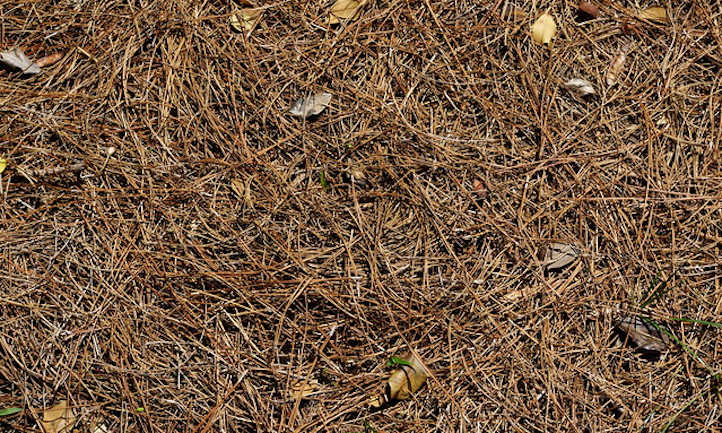
Wood Shavings
This natural mulching material is smaller than chips but larger than sawdust. Thanks to their niche size, they absorb moisture well, but slowly. The little, textured pieces are also a deterrent to slugs and other soft-bodied bugs. Shaving mulch is usually reserved for walkways or a decorative landscape because it initially absorbs nitrogen from the soil. Once it completely decomposes in a couple of years though, the nitrogen will be returned.
An excellent option is wood shavings that were used for horse stall bedding. This brings all the above benefits along with natural nutrients from the horse manure. You’re also likely to find used horse bedding (and lots of it) for free if you know a horse owner. The downside, of course, is that your mulch may be a bit on the smelly side.
Cardboard Mulch
There are a few ways to use cardboard as mulch. For the least initial effort, just flatten some cardboard boxes and lay them over any spaces where you want to kill the weeds and amend the soil. Soak the cardboard with water and make sure it’s pinned down so it won’t blow away. Now, this isn’t the most attractive method (pizza boxes don’t really blend into the landscape). So, many gardeners layer a different mulch on top.
Instead of layering mulch, you could shred up the cardboard before putting it in the garden. This will allow for more aeration, especially if you use corrugated cardboard. Cardboard that’s coated in plastic won’t decompose nearly as well in the garden. Pizza boxes should only be used if they have minimum grease stains.
Newspaper Mulch
Don’t like what you see in the newspaper? Use it as mulch! Whether shredded or whole, paper will absorb moisture and break down quickly in the garden. If you want to make a solid newspaper layer, it’ll need to be several pages thick. Luckily, it’s pretty easy to get newspapers in bulk. Aside from saving your own, ask your neighbors, local schools, libraries, and even local newspaper offices for their old newspapers.
Newspapers should be a bit easier to shred than cardboard since you can just stick it in a paper shredder. Like cardboard, it’ll have more aeration and break down faster than layered newspaper. However, newspapers can become matted together and form a thick layer, so you may have to break it up occasionally.
Compost as Mulch
If you use compost in your garden, you’ve probably already used it as mulch without realizing it! By laying down some dense, rich compost on the ground, you’re also creating that barrier we’re after. Plus, since it looks so much like soil, no one else will notice it’s actually mulch!
The best part of using compost as mulch is that it will fertilize your plant’s roots as it decomposes. However, since it can be made of many different materials, you’ll want to check that it’s compatible with the plants you’re growing. For example, mushroom compost has a relatively low nutritional content while coffee grounds in compost are a mild nitrogen fertilizer.
Compost as mulch can be free if you set up a compost bin at home. This is a hefty time commitment though so you can also buy it pre-packaged. Whatever kind you use though, compost will decompose quickly and need replenishing often.
Inorganic Mulch
You won’t get an extra dose of fertilizer from inorganic mulches, but they’re still the right mulch for many situations. The best thing inorganic mulch has going for it is that it’s long-lasting. You’ll only be replacing or replenishing it yearly at most. If you’re really looking to go low-maintenance, this category is for you!
Rubber Mulch

Rubber mulch isn’t as weird as it sounds. It’s usually just shredded rubber products, like recycled tires. The end result looks surprisingly like many other types of mulch. One could hardly tell it once belonged on a vehicle! Unlike other mulches, though, rubber mulch keeps its good looks for a while. It also stays in place well and remains dry and bacteria-free.
Rubber mulch is best used in a landscape, not annual gardens. Because it doesn’t decompose, this mulch won’t give anything back to the soil. It also can’t be tilled into the ground, so removal could be a pain. Also, if it wasn’t processed correctly, rubber mulch could retain metal contaminants.
Lastly, you have to know that rubber mulch is flammable and a serious hazard if it catches on fire. If you live in a fire-prone region, rubber mulches are not a good choice.
Plastic Mulch
Plastic has to be the ugliest of the inorganic mulches. But, it’s extremely efficient when used in a vegetable garden. You can lay out large sheets of plastic and cut holes where the plants will sprout up. This method can easily cover large areas with high efficiency. It makes it impossible for weed seeds to sprout spread and insulates plant roots well in the winter and early spring. In my experience, it’s especially useful for sprawling plants like pumpkins or watermelon because it keeps the vines and leaves away from soil-dwelling insects and bacteria.
There are a few downsides to plastic mulch. First, it’s inorganic, so it’s not going to contribute much to the soil’s nutrition. Second, you’ll have to plan your irrigation system around it. Above-ground watering is going to pool on the plastic, so it’d be best to set up drip lines right at the plant bases. However, some plants, particularly shrubs, will grow shallow roots when the watering system is altered like this.
Lastly, you have to admit that plastic looks pretty ugly compared to cocoa hulls, cedar bark, or even compost. If you really want the benefits of plastic mulch without the industrial aesthetic, we recommend using thick landscape fabric with organic mulch layered on top.
Pumice Rock
We’ve discussed arborist byproducts, tire byproducts, and even pizza byproducts, but here’s the coolest (or hottest) one: volcano byproducts! Pumice rock is a relic of ancient volcanic eruptions. It has a unique texture since it’s technically glass. Thanks to that, and its abundance in the southwest, pumice rock is a great choice for mulch.
Pumice rock mulch may draw up and hold water from the soil. Its large size is great at creating better aeration. It should be used with waterlogged soils or garden beds with desert plants that prefer less moisture. This mulch is also excellent at preventing soil erosion.
Even though it catches water, pumice is still an inorganic stone. It won’t decompose. However, over time it may break into smaller pieces and become less effective.
Pea Gravel
An inorganic mulch, pea gravel retains moisture and keeps out weeds but doesn’t decompose. This could be good or bad depending on where you put it. In a landscape, it keeps up its good looks and won’t need to be replaced much. In the yard though, pea gravel stones won’t give anything back and can get in the way when trying to work the soil. Hence, pea gravel is best suited for decorative mulching around trees and shrubs.
Frequently Asked Questions
Q: What is the best kind of mulch to use?
A: That depends on what type of garden beds you have. If you need something for an ornamental landscape, hardwood chips or pumice rock and efficient and pretty mulch materials. If you need mulch for something like a vegetable patch, straw, fine wood chip, or compost mulches are the way to go.
Q: What is the best mulch to prevent weeds?
A: Most of the different types of mulch will keep weeds out of the garden bed. Some of the most efficient out there include plastic and cardboard mulch because they make a solid barrier. If you want to use a different mulch, we recommend laying landscape fabric underneath as extra weed spread protection.
Q: What is the best mulch to use around your house?
A: If you live somewhere prone to wildfires, stay away from dried plant mulches, like leaves, pine needles, or cardboard. You’ll also want to avoid anything that can melt, like rubber. Stones and hardwood arborist wood chips are the safest option here.



